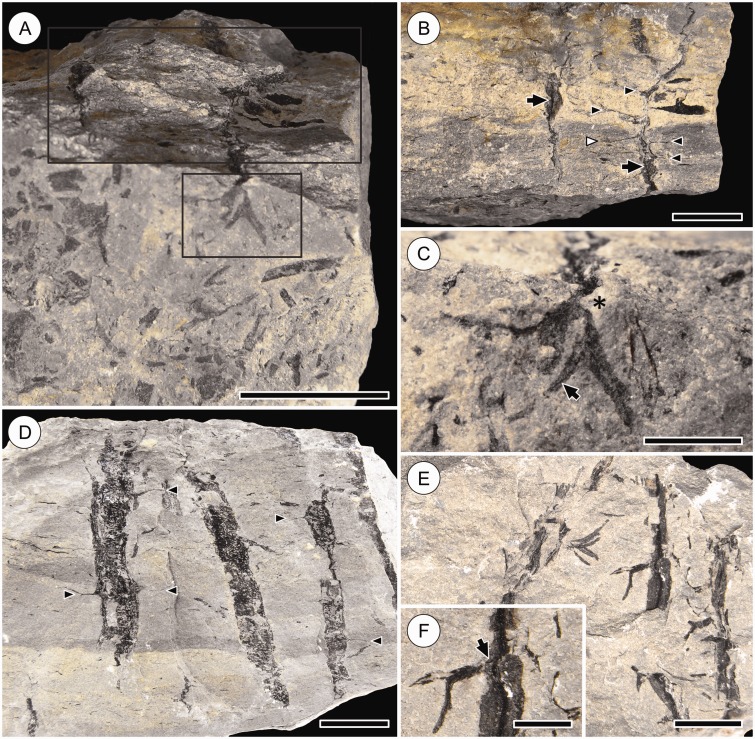Fig. 8.
Vertical in situ root-bearing axes of the Cottonwood Canyon lycophyte; all specimens shown in original stratigraphic orientation. (A) Oblique view of rock specimen showing both vertical face (top) and lower horizontal face (bottom). In situ root-bearing axes preserved on the vertical face (top box) produce roots that diverge onto lower horizontal face (bottom box); upper box detailed in (B) and lower box in (C). Note abundant fragmented organic material on the lower horizontal face of the rock specimen. Scale bar = 10 mm. HPH 210. (B) Vertical face of rock specimen in (A) with two root-bearing axes that cross bedding planes. Note the thin central stele in both axes (arrows) and numerous lateral roots (arrowheads) diverging from the axis at right. Diverging roots are compressed on horizontal planes, but diverge with a downward curvature before becoming horizontal (e.g. at white arrowhead). One root tuft (not visible in this plane) diverges from the axis where it intersects the lower horizontal face of the rock specimen (detailed in C). Scale bar = 10 mm. (C) Horizontal face of rock specimen in (A) showing detail of root tuft connected to the vertical root-bearing axis shown in (B). Note branching of the root, continuity with the vertical axis (asterisk) and thin central stele of root (arrow). Scale bar = 2 mm. (D) Vertical face of rock specimen with three root-bearing axes that cross bedding planes. All three axes are compressed in the vertical plane of the rock face, which reveals their width. Note horizontally compressed roots diverging from the axes (arrowheads). Scale bar = 10 mm. DMNH 29594. (E) Root-bearing axes preserved in oblique growth position, with lateral roots compressed along the same plane. Note central stele of axis in the middle, detailed in (F). Scale bar = 10 mm. HPH 71. (F) Detail of axis and attached root in (E). Note the downward divergence of the root trace preserved in the cortex of the axis (arrow), indicating the direction of growth. Scale bar = 5 mm.

